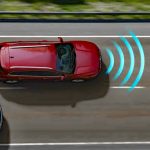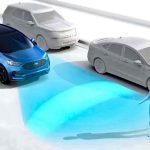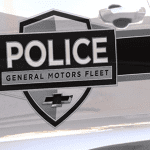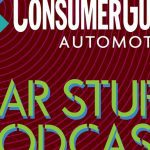
 Beginning with the 2029 model year, all new passenger vehicles will be required to be equipped with forward Automatic Emergency Braking (AEB) systems. Though variations of the system are already found on an estimated 90 percent of new cars and trucks, the 2029 law establishes performance benchmarks and operational parameters for AEB.
Beginning with the 2029 model year, all new passenger vehicles will be required to be equipped with forward Automatic Emergency Braking (AEB) systems. Though variations of the system are already found on an estimated 90 percent of new cars and trucks, the 2029 law establishes performance benchmarks and operational parameters for AEB.
Automatic Emergency Braking
Found on vehicles from every vehicle make available in the U.S., AEB goes by a number of brand specific names, including:
 Alfa Romeo: Autonomous Emergency Braking
Alfa Romeo: Autonomous Emergency Braking- Audi: Pre Sense Plus
- BMW: Driving Assistant Plus
- Fiat: Forward Collision Plus
- Ford: Active City Stop
- Honda: Collision Mitigation Braking System
- Hyundai: Autonomous Emergency Braking
- Jeep: Forward Collision Plus
- Kia: Autonomous Emergency Braking
- Land Rover: Autonomous Emergency Braking
- Lexus: Pre-collision Safety System with Brake Assist
- Maserati: Forward Collision Warning Plus
- Mazda: Smart City Brake Support
- Mercedes-Benz: PRE-SAFE Brake
- Mini: City Collision Mitigation
- Mitsubishi: Forward Collision Mitigation
- Nissan: Intelligent Emergency Braking with Forward-Collision Warning
- Porsche: Warn and Brake Assist
- Subaru: Pre-Collision Braking System (Eyesight)
- Suzuki: Advanced Forward Detection System
- Tesla: Automatic Emergency Braking
- Toyota: Pre-Crash Safety System
- Volkswagen: City Emergency Braking
- Volvo: City Safety
 Given the wide range of names applied to AEB systems, it’s clear that not all the systems operate in the same fashion of cover the same set of emergency situations. The new law, crafted by the National Highway Traffic Safety Administration (NHTSA) is designed to that all AEB systems operate in the same manner, and respond to at least a minimum of safety threats.
Given the wide range of names applied to AEB systems, it’s clear that not all the systems operate in the same fashion of cover the same set of emergency situations. The new law, crafted by the National Highway Traffic Safety Administration (NHTSA) is designed to that all AEB systems operate in the same manner, and respond to at least a minimum of safety threats.
For 2029, all AEB systems must act to mitigate potential frontal impacts at speeds of up to 90 mph, to come to stop prior to impact at speeds up to 62 mph, and detect and avoid contact with pedestrians at speeds up to 45 mph. The systems must work in both daylight and at night.
Regulators estimate that the new law will ad $83 to the cost of every new vehicle, and potentially save 360 lives annually.
For the 2012 model year NHTSA enacted similar regulations, requiring anti-lock braking and stability-control systems be installed on all new light-duty vehicles and adhere to established performance standards.
Tech Trouble: Surprising Number Of Drivers Confused By Auto Safety Features
AEB Gallery
(Click below for enlarged images)
Car Safety for Kids, 1950s Style: Put ’Em in a Harness and Give ’Em a Gun!








